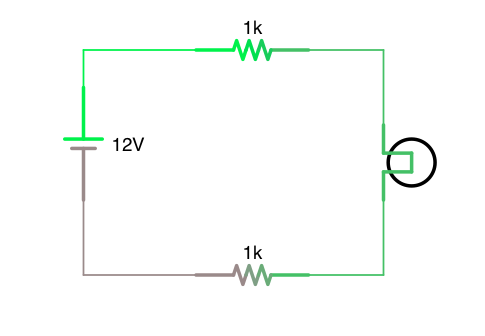Basic electrical circuits are made up three components – voltage, resistance and current.
- Voltage (E) is an imbalance of electron distribution or a charge difference between two points. Measured in volts (V)
- Resistance (R) is the opposition to current flow, how hard it is for charges to move within the system. The units of resistance are measured in ohms
- Current (I) this is the movement of electrons. In basic electrical circuits with a path, electrons will move from the negative pole to the positive pole. Measured in ampres (A)
An electrical circuit needs a never ending looped pathway for electrons to travel along. Electrons need an eloctro motive force (EMF) source and destination.
In order to make this source-destination system work, both the source and the destination would need to have an infinite capacity to allow the electrons to sustain a continuous flow.
When you take a wire, or join many wires together, and loop it to form a continuous path, you have what electrons need to flow without the need of an infinite supply of sources and destinations.
When all of the electrons are advancing in a clockwise motion in the circuit, they push the ones before them forward, just as if you had a hula hoop full of marbles. This is a circuit, and you now have the ability to support a continuous flow of electrons.
Continuity in a circuit is just as important as it is in a straight source to destination set up. Any break in the circuit will stop the flow of electrons. Where the break is does not make any difference. The wire or conductive material must be unbroken from start to finish in order to sustain the flow of electrons.
For example, if you turn on a lamp and it will not light up, there are two possible causes – either the bulb is burnt out or there is a break in the wire.
Both of these causes stop the flow of electrons. The electrons can not pass through a burnt out bulb because the filament is broken. Just as it can not pass through a broken wire.

No comments:
Post a Comment